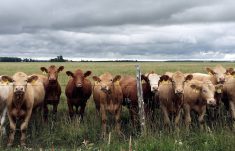Food companies like to use descriptors such as “non-GMO”, “gluten-free”, “humane certified” and numerous labels to differentiate their products in the marketplace. These often follow consumer trends, usually initiated by lobbyists for environmental, animal welfare, nutrition and health groups.
They can also be considered greenwashing when they are used incorrectly or fraudulently.
The latest trend appears to be regenerative agriculture, although it has yet to have a clear descriptor, for food product packaging at least. But regardless, investments being made indicate a growing interest.
Read Also

When farmers vote against their interests
U.S president Donald Trump has left many clues over the years that many of his actions weren’t going to necessarily be in the best interests of American farmers.
An example is the recent announcement that fast food giant McDonald’s has formed a partnership with McCain Foods to invest $1 million in regenerative soil education and practices for Canadian potato production. They’ve set up a potato farming fund to help 130 of McCain’s potato growers adopt regenerative soil practices through cost-share grant applications over the next year.
This is part of McCain’s regenerative agriculture “framework” developed for its potato farmer suppliers, which aims to have growers adopt regenerative practices such as cover cropping, minimal tillage, enhanced biodiversity and optimal water management.
As a major purchaser of McCain’s frozen potato products, it makes sense that McDonald’s wants to throw its hat in the ring. The company has a track record of choosing to work with its supplier partners on initiatives like this, rather than demanding that change happen and when. A good example of this is the Canadian Roundtable for Sustainable Beef.
Is McDonald’s doing this to fulfil a corporate social responsibility pledge? That’s likely part of it, but as a major global buyer of agricultural products, the company realizes that, while it needs to keep up with consumer trends and desires, it also has to ensure product supply.
I worked in the poultry industry for more than 10 years and I can’t tell you how many ‘pledges’ I saw food companies make with respect to how an animal was raised. Hot on the heels of the non-GMO movement was the ‘cage-free’ and anti-gestation crate movement.
Fast food companies and restaurants were quick to follow each other in making claims that they would only serve cage-free eggs or pork sourced from free housing by such-and-such a date, with zero industry consultation on a) what such a change in management would entail logistically and b) what effect it would have on farmers, suppliers and the animals themselves.
Of course, many couldn’t stick to their committed dates and didn’t meet them until many years later, if at all.
The problem was the financial cost to the industry as well as the effects on production. There wasn’t a lot of data available to guide industry to make this change swiftly, and what did exist was measured under European conditions.
One good thing that resulted from this trend is an improved understanding of animal welfare and greater availability of new housing options that is still being intensively researched. Standards were set so that a label or descriptor for animal products raised a certain way served as a guide to consumers who choose these types of products.
But the examples I have given are more easily measured than those used in regenerative agriculture. We can measure the cost, production and inputs for animal products in a housing system.
Measuring the environmental (and financial) benefits of soil health, carbon sequestration and other regenerative practices is going to be much more difficult to measure.
David Montgomery, a University of Washington scientist who has written several books on soil and regenerative farming, including Dirt: The Erosion of Civilizations says that this is a challenge, and it can’t be a one-size-fits-all approach.
Government, industry and companies need to think carefully on how to measure and label regenerative agriculture or it could become another victim of corporate greenwashing.
– This editorial was originally published at Farmtario.














